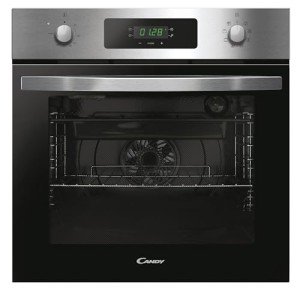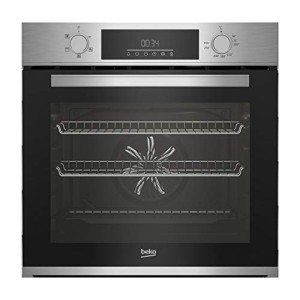7 Tips About Single Built In Oven That Nobody Can Tell You
페이지 정보
작성자 August 작성일 25-07-01 03:38 조회 53 댓글 0본문

The Comprehensive Guide to Single Built-In Ovens: Features, Benefits, and FAQs
Introduction
In modern kitchen areas, the combination of devices is crucial to accomplishing a structured design. Among these devices, the built-in oven stands apart as a staple for daily cooking. In particular, single built-in ovens are getting popularity due to their space-saving style and efficiency. This article checks out the features, advantages, and commonly asked questions about single built-in ovens, assisting house owners make informed options.
What is a Single Built-In Oven?
A single built-in oven is a cooking home appliance developed to be embedded within cabinetry, providing a seamless look that complements the kitchen's aesthetic. Unlike freestanding ovens, built-in variants use a range of functions and designs that accommodate contemporary culinary requirements.
Secret Features of a Single Built-In Oven
Single built-in ovens included a variety of functions that boost functionality and user experience. Here are a few of the most crucial attributes:
| Feature | Description |
|---|---|
| Size and Capacity | Generally varies from 24 to 30 inches in width; appropriate for various kitchen sizes. |
| Cooking Modes | Several settings, including convection, baking, broiling, and in some cases steam cooking. |
| Controls | Digital touch controls or conventional knobs with exact temperature level settings. |
| Self-Cleaning Options | Numerous models consist of self-cleaning functions for simpler upkeep. |
| Energy Efficiency | Created to consume less energy, often with an A+ energy ranking. |
| Security Features | Consists of child locks, cooling systems, and temperature sensing units. |
| Style Options | Offered in numerous surfaces (stainless-steel, black, and so on) and designs (modern-day, traditional). |
Advantages of Using a Single Built-In Oven
The adoption of single built-in ovens provides many advantages:
- Aesthetics: They develop a modern-day and refined look in the kitchen, blending effortlessly with kitchen cabinetry.
- Space-Saving: Ideal for smaller cooking areas, they are created to optimize space by being built into walls or cabinets.
- Increased Functionality: Many designs feature sophisticated cooking innovation such as clever features that allow remote control by means of smart device.
- Easy to Use: With intuitive controls, built-in ovens are easy to use and ideal for both novice and experienced cooks.
- Improved Cooking Performance: Convection designs circulate hot air for even cooking results.
Popular Brands and Models
Numerous brand names control the single built-in oven market, each offering distinct functions to deal with customer preferences. Here are some notable ones:
| Brand | Popular Models | Secret Features |
|---|---|---|
| Bosch | HBN8451UC, HBL8453UC | European design, convection heat, Wi-Fi connection. |
| Electrolux | E30SO75GPS, E30SO75PPS | Variations in size, advanced grilling abilities. |
| Samsung | NV51K6650SG | Dual convection, clever technology, flexible cooking modes. |
| Whirlpool | WOS51EC0HS | Inexpensive, trustworthy, self-cleaning features. |
| LG | LWS3063ST | Smart innovation, air fry mode, smooth looks. |
Installation Considerations
Setting up a single built-in oven includes particular considerations:
- Measurement: Ensure that the space set aside is suitable with the oven's measurements.
- Ventilation: Adequate airflow must be maintained for safety and effectiveness.
- Electrical Needs: Check voltage requirements and ensure proper electric outlets are offered.
- Professional Installation: While some house owners may pick DIY, working with a specialist can alleviate setup issues.
Often Asked Questions (FAQs)
How much space is required for a built-in oven?
- A built-in oven normally requires a designated space that varies by design, generally from 24 to 30 inches in width. Constantly describe the producer's specifications for accurate dimensions.
Can I set up a built-in oven by myself?
- While some may attempt a DIY setup, it is typically suggested to hire a professional to make sure proper fitting, electrical connections, and ventilation.
Are single built-in ovens more pricey than freestanding models?
- Generally, yes. Single built-in ovens tend to cost more due to their style, setup, and additional features.
What are the differences in between convection and regular ovens?

- Stove have a fan that flows hot air throughout, resulting in even cooking. Conventional ovens rely on glowing heat, which might result in hot areas and uneven cooking.
What maintenance is needed for a built-in oven?
- Regular cleansing, guaranteeing vents remain unblocked, and keeping an eye on functions. Numerous designs provide self-cleaning alternatives, which simplify maintenance.
Single built-in ovens represent a convergence of design, convenience, and performance in modern kitchen areas. With a myriad of functions and designs readily available, these ovens accommodate different cooking needs and choices. Whether you are a hopeful chef or a periodic home cook, buying an appropriate single built-in oven can boost your cooking experience while elevating your kitchen's aesthetic. Careful factor to consider of functions, setup requirements, and maintenance will result in a satisfying financial investment in this important kitchen device.
- 이전글 You'll Never Be Able To Figure Out This Drivers License Uk's Secrets
- 다음글 You'll Never Guess This Veleco Mobility Scooters Uk's Secrets
댓글목록 0
등록된 댓글이 없습니다.